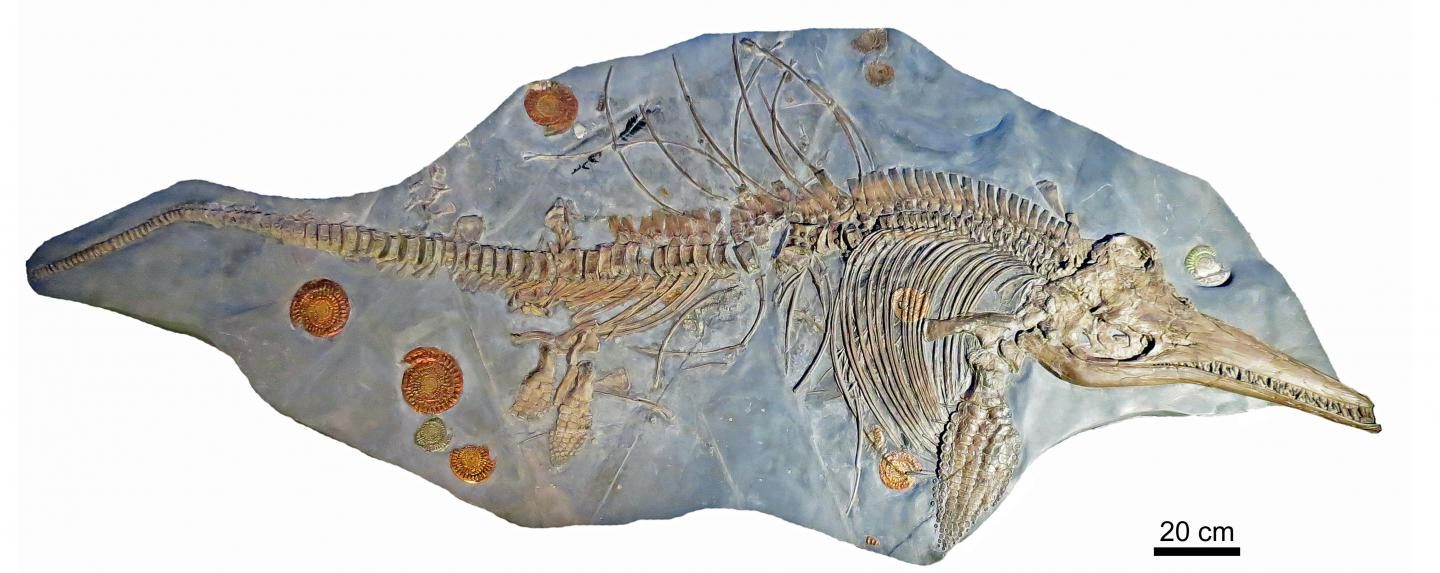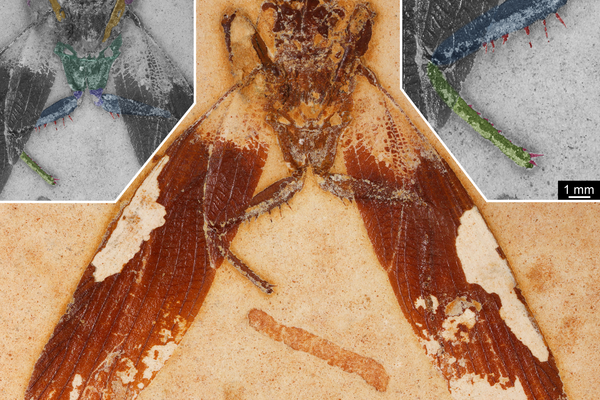Found: The Largest Fossil Ever of an Ancient ‘Sea Dragon’
It was pregnant, too.

Fossils of Ichthyosaurus, an ancient creature that swam the oceans before the dinosaurs even existed, were some of the first evidence that humans discovered of prehistoric life on earth. The first complete fossil of one of these reptiles was found in 1810, by a scrappy female paleontologist named Mary Anning, on the cliffs of Britain. So when another specimen of Ichthyosaurus was unearthed on the coast of England in the 1990s, this new “sea dragon” fossil wasn’t considered such an important discovery.
Now, though, two paleontologists report in the journal Acta Palaeontologica Polonica that this fossil is a unique specimen—the largest Ichthyosaurus ever found, with a fossilized embryo in its belly, the third ever on record, the BBC reports.

After the fossil was first discovered, it made its way to the Lower Saxony State Museum, in Hannover, Germany. Recently, Sven Sachs of the Bielefeld Natural History Museum, spotted it there and began to suspect it might be worth taking a closer look at. With ichthyosaur expert Dean Lomax, of the University of Manchester, he examined the specimen and determined that, at more than 10 feet long, this specimen was the largest Ichthyosaurus somersetensis ever found.
This particular reptile would have lived about 200 million years ago; its kind went extinct about 90 million years ago, in the Cretaceous period.
The paleontologists found another surprise when they examined this particular fossil more closely—its tail had been appended from another ichtyosaur entirely, in order to make it look better on the wall of the museum.




















Follow us on Twitter to get the latest on the world's hidden wonders.
Like us on Facebook to get the latest on the world's hidden wonders.
Follow us on Twitter Like us on Facebook